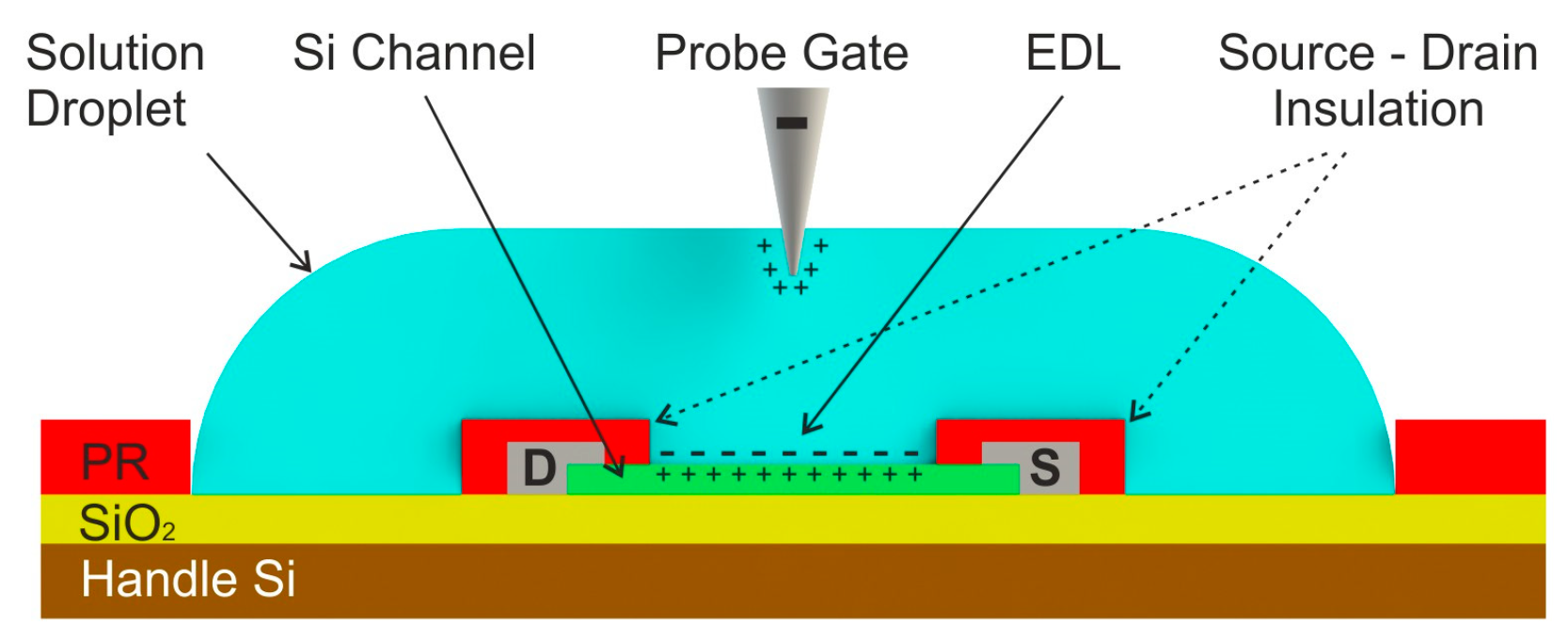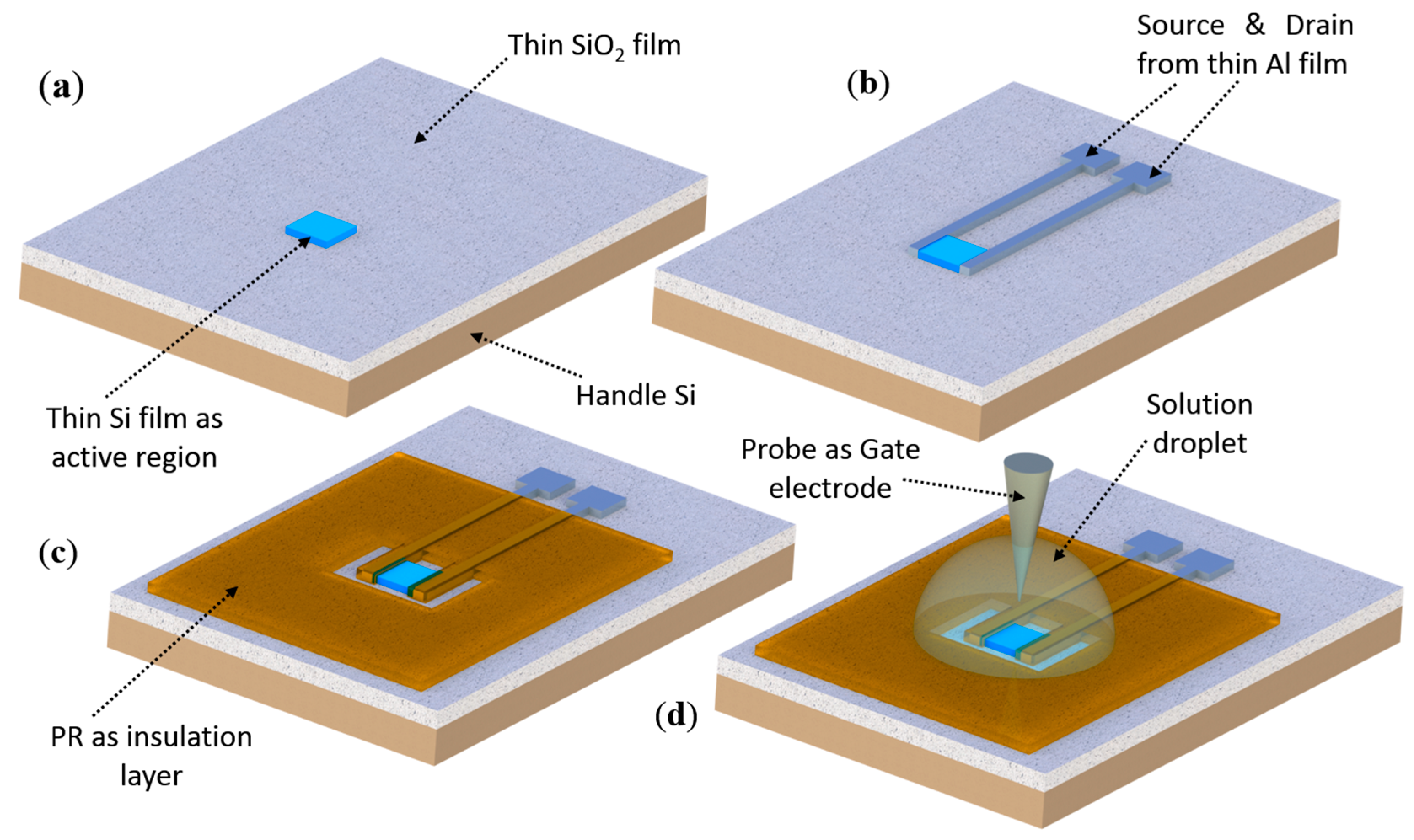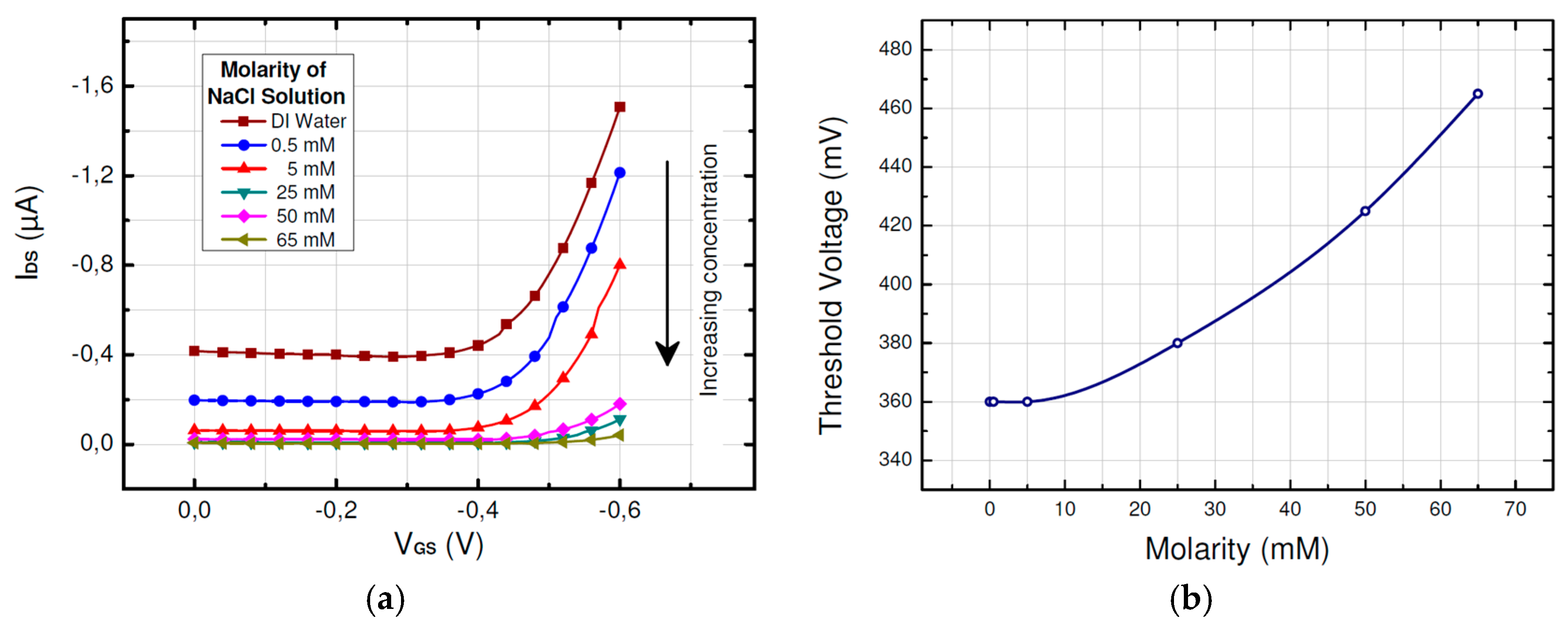Investigation of the Salt Concentration Dependence of Water-Gated Field Effect Transistors (WG-FET) Using 16-nm-Thick Single Crystalline Si Film †
Abstract
:1. Introduction
2. Materials and Methods
3. Results and Discussion
4. Conclusions
Acknowledgments
Conflicts of Interest
References
- Chen, Y.; Wang, X.; Erramilli, S.; Mohanty, P.; Kalinowski, A. Silicon-based nanoelectronic field-effect pH sensor with local gate control. Appl. Phys. Lett. 2006, 89, 223512. [Google Scholar] [CrossRef]
- Bergveld, P. Thirty years of ISFETOLOGY: What happened in the past 30 years and what may happen in the next 30 years. Sens. Actuators B Chem. 2003, 88, 1–20. [Google Scholar] [CrossRef]
- Sonmez, B.G.; Ertop, O.; Mutlu, S. Improved repeatability in planar water-gated field effect transistor (WG-FET) with 16-nm-thick single crystalline Si film. Procedia Eng. 2016, 168, 1739–1742. [Google Scholar] [CrossRef]
- Bard, A.J.; Faulkner, L.R. Double-Layer Structure and Adsorption. In Electrochemical Methods Fundamentals and Applications, 2nd ed.; John Wiley & Sons, Inc.: New York, NY, USA, 2001; pp. 534–579. [Google Scholar]
- Van Hal, R.E.G.; Eijkel, J.C.T.; Bergveld, P. A novel description of ISFET sensitivity with the buffer capacity and double-layer capacitance as key parameters. Sens. Actuators B Chem. 1995, 24–25, 201–205. [Google Scholar] [CrossRef]





Publisher’s Note: MDPI stays neutral with regard to jurisdictional claims in published maps and institutional affiliations. |
© 2017 by the authors. Licensee MDPI, Basel, Switzerland. This article is an open access article distributed under the terms and conditions of the Creative Commons Attribution (CC BY) license (https://creativecommons.org/licenses/by/4.0/).
Share and Cite
Ertop, O.; Sonmez, B.G.; Mutlu, S. Investigation of the Salt Concentration Dependence of Water-Gated Field Effect Transistors (WG-FET) Using 16-nm-Thick Single Crystalline Si Film. Proceedings 2017, 1, 486. https://doi.org/10.3390/proceedings1040486
Ertop O, Sonmez BG, Mutlu S. Investigation of the Salt Concentration Dependence of Water-Gated Field Effect Transistors (WG-FET) Using 16-nm-Thick Single Crystalline Si Film. Proceedings. 2017; 1(4):486. https://doi.org/10.3390/proceedings1040486
Chicago/Turabian StyleErtop, Ozan, Bedri Gurkan Sonmez, and Senol Mutlu. 2017. "Investigation of the Salt Concentration Dependence of Water-Gated Field Effect Transistors (WG-FET) Using 16-nm-Thick Single Crystalline Si Film" Proceedings 1, no. 4: 486. https://doi.org/10.3390/proceedings1040486



